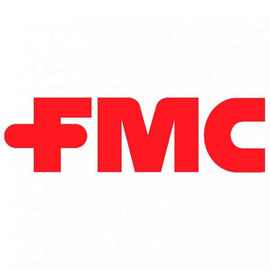Gunderson, Inc.
Brand
In 1919, Chester Ellsworth Gunderson, son of a Swedish immigrant, founded the Wire Wheel Sales & Service Company, acting as a distribution partner for the Houk Company, Pennsylvania, a manufacturer of wire wheels. His brother Alvin Gunderson joined the company in 1923. In 1925, the company became the Wheel & Rim Service Inc..
By the 1930s, the company expanded in other automobile parts servicing. After an unsuccessful foray into the fertilizer distribution business, the company began to manufacture trailers, the equipment for which required an investment of over $12,000. In 1937, they began manufacturing dual-axle trailers, suitable for on- and off-road use. The new design of trailers was a commercial success and in 1938, the incorporated company Gunderson Bros. was formed, with its factory in Linnton, Portland, Oregon. In 1941, the company began building ships.
Subject ID: 13012
MoreIn 1919, Chester Ellsworth Gunderson, son of a Swedish immigrant, founded the Wire Wheel Sales & Service Company, acting as a distribution partner for the Houk Company, Pennsylvania, a manufacturer of wire wheels. His brother Alvin Gunderson joined the company in 1923. In 1925, the company became the Wheel & Rim Service Inc..
By the 1930s, the company expanded in other automobile parts servicing. After an unsuccessful foray into the fertilizer distribution business, the company began to manufacture trailers, the equipment for which required an investment of over $12,000. In 1937, they began manufacturing dual-axle trailers, suitable for on- and off-road use. The new design of trailers was a commercial success and in 1938, the incorporated company Gunderson Bros. was formed, with its factory in Linnton, Portland, Oregon. In 1941, the company began building ships.
In 1938, the company was near bankruptcy, in part due to the effects of the Great Depression, and in part due to the Gundersons' own financial mismanagement. The company's main creditor took control of their accounts, and began to pay their suppliers. However, the company's financial position remained tenuous.
At the beginning of the Second World War, the company handled assembly work for the U.S. Navy; a 1941 a loan from the Navy enabled Gunderson Bros. to build a shipyard. During the same period, continued debts caused the Federal Government to take the original factory as security. Gunderson also constructed lifeboats, landing crafts, and other vessels, as well as trailers for the U.S. Army. A shortage of manpower also led to the first women working in the construction sheds.
In 1942, the company became Gunderson Bros. Engineering Corporation. After World War II, the company had comprehensive facilities for large scale metal engineering, as well as a slipway for launching ships at the Front Avenue plant, and the earlier Linnton plant was closed. Construction of marine vessels such as tugs, barges, trawlers, and more specialised craft continued in the 1950s and 1960s, and by the 1970s the company was building vessels as long as 650 ft and as wide as 100 ft.. Other postwar business lines included metal water towers, large scale metal storage tanks, bridges, and structural steel for buildings, as well as specialised equipment such as metal slipways for the McNary Dam (1950s), a dry dock for the Port of Portland (1963), and the vessel RP FLIP (1962).
The company entered the railroad freight car business in 1958, with a successful bid to construct 200 boxcar underframes for the Southern Pacific Railroad. The business was successful and profitable, and the order expanded with Gunderson eventually building over 2,000 frames in the first contract.
In 1965, the Gundersons sold their company to the FMC Corporation. In 1973, the company became the Marine and Rail Equipment Division of FMC (MRED). In 1979, over 6,000 rail cars were produced. The following year the early 1980s recession began and many orders were cancelled and new orders plummeted; in 1982, only 25 rail cars were built. Simultaneously, new developments in rail freight transport led to new products, such as multi-platform articulated spine car sets for TOFC transportation of highway semi-trailers were built for the Itel Corporation. Also in the 1980s, the company developed "Twin-Stack" well cars for double-stack rail transport of intermodal containers in a joint venture with Greenbrier. The "Twin-Stack" double-stack car became an important product with approximately 3,000 being produced per year in 1990.
In 1985, the company was acquired by The Greenbrier Companies, but the Gunderson plant remains a successful facility.
Subject ID: 13012
Subject ID: 13012

